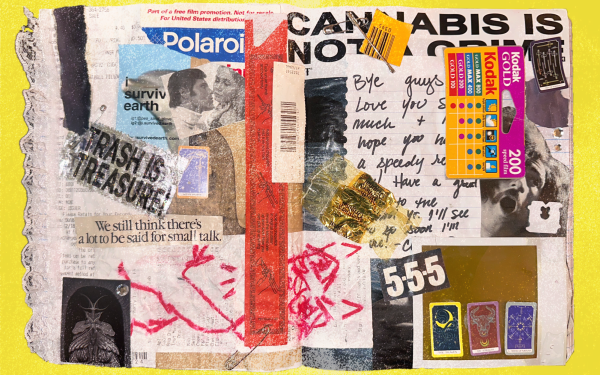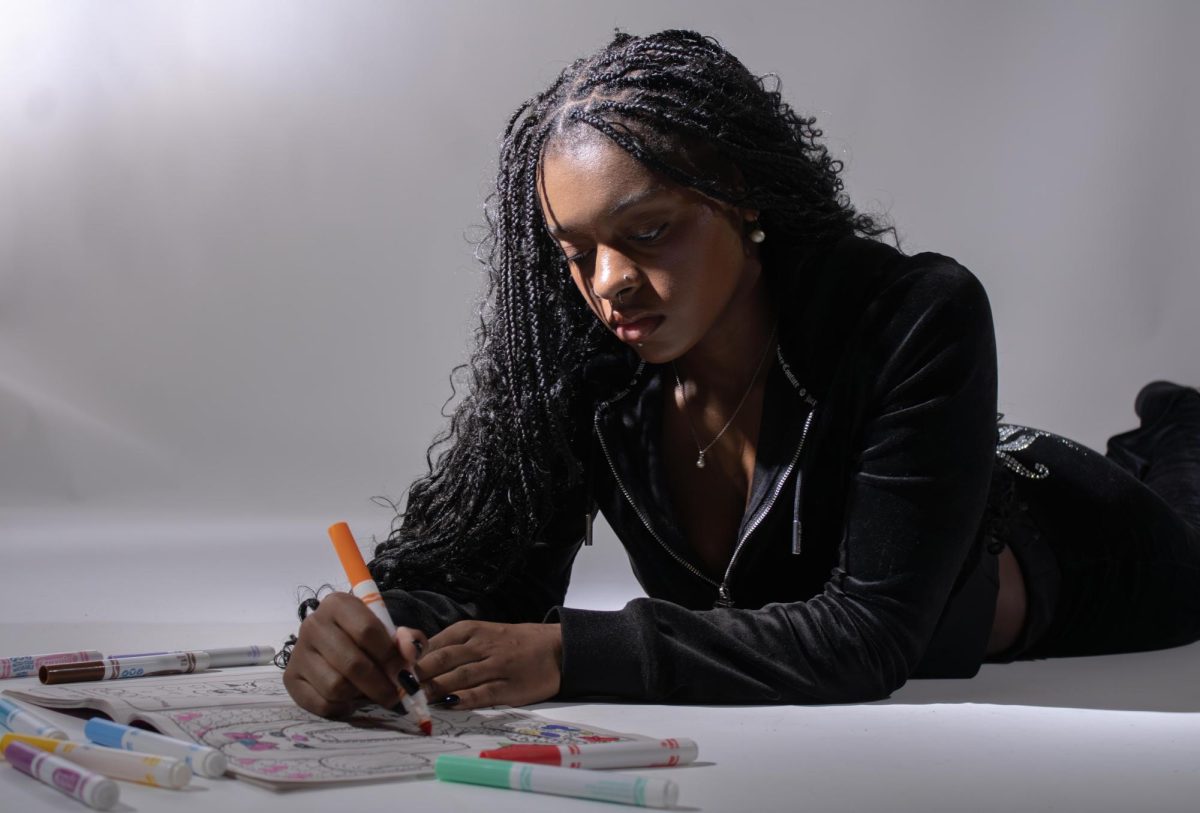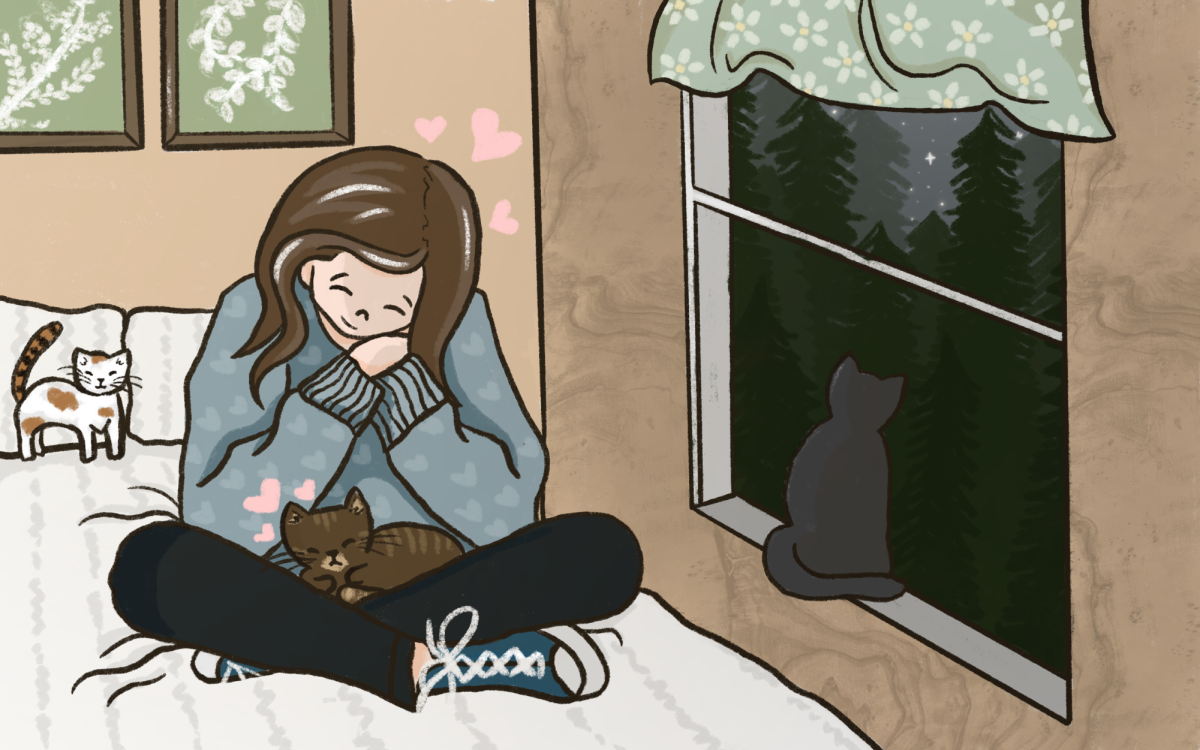
I am practically running down the sidewalk, late for class, and my to-go coffee has stopped warming my freezing fingers. I look down and decide to sacrifice the half-inch of drink left. As I hover my drink above the next trash can, I pause and notice the coffee sleeve has the local shop‘s logo stamped on it. Perfect. I remove the sleeve, shove it into my pocket, toss the cup, and rush into class. I know it will find a home in my junk journal later.
What is junk journaling anyway, and why is it important?
Junk journaling is the act of collaging things such as food wrappers, packaging, tickets, fruit stickers, photos, old wrapping paper- the list can go on forever- onto a page to create a cohesive spread. One man’s trash is another man’s treasure. The saying rings true when it comes to junk journaling.
Instead of writing about a topic, visual learners might find it therapeutic to dump their feelings out onto a journal spread. If that’s not their jam, it’s easy to decorate less and let the beauty of words do their talking. There is only one rule in junk journaling— anything is possible!
To dive deeper, let’s talk about the ever-changing definition of art. Can junk journaling even be considered art? Most people think they cannot be artists and limit themselves in the belief that good art only encompasses fine-tuned works that are seemingly perfect.
Art to me is the act or outcome of creating a sensually pleasing representation of a concept with the intention of evoking conversation with a viewer. Quite a lot of things can fall into this category, but it is up to the viewer to decide where the line of non-art falls. The special thing about junk journaling is that the viewer may only be yourself, which makes creating casual by removing the pressure of rules people have the tendency to follow to make “good” art.
More people than ever seem to be hopping onto the junk journaling trend. Why?
Physical collaging can seem like an outdated activity, but in an age of media that is easily consumed, it seems that people are enjoying the fact that visual journaling gives respite to the fast-paced culture of short-term digital entertainment. The hobby of finding things to put in a journal paired with the slowness that comes with pasting physical objects onto a page allows people to get out of the online sphere and support a present mindset by bringing attention to mundane life.
As someone who often plays rigidly, whether I like to admit it or not, junk journaling has allowed me to loosen up and feel confident using up stickers I “just couldn’t find the right place for” or appreciate a messy and imperfect creation. If I feel overwhelmed, I make my to-do list visually appealing and get a little more motivation to cross things off. If I find myself stuck in a creative block, I turn to my stashed junk and try to make something out of it to spark new ideas.
Creating art out of “junk” teaches us how to see potential in things that may be otherwise overlooked, which is a lesson that can be applied to any situation in life.
Collecting and displaying things to express oneself is instinctive human behavior— junk journaling is a modern and sustainable way of fulfilling this need.
Through the years, I have opened many journals and filled each one differently, but it seems this way has been the most persistent.
I am six. I pick up a fallen leaf from our drooping Japanese Maple. A small stick from our flower bed. Another green leaf. A white trumpet flower from the Hosta. An acorn cupule, imagining it to be a boat for imaginary people. And funnily, a rock. I bring my prized collection inside, tenderly splay them across journal pages, and tape them down. I admire my work, shut the journal– the rock keeping it from closing fully— and continue my day. Later, the rock’s bump causes me to begin my next journal entry on the right side of the page.
Something as simple as collecting leaves bears so much meaning to me now. When I open that page of organic objects from my childhood home, I am immediately taken back to that day when the summer cicadas chirped while my mother sat on the porch steps running her at-home daycare, the sweet smell of sun-drenched birch leaves filling the air. Looking at the now crumbling leaves in my first-grade journal brings a sense of nostalgia and peace knowing that younger me placed them there with such pure intentions and appreciation of beauty. The synchronicity of always starting written entries on the right side of the journal and my decision to tape a rock on a page ties me meticulously to my younger self.
As an observer, it seems junk journaling has always been a way for me to collect and display things I find beautiful. It has helped me learn to find positive meaning in every small thing, as well as take the pressure of being perfect as a creator off my shoulders. Everyone connects with junk journaling differently and uniquely to themselves.
Support Student Media
Hi! I’m Kayla Friedman, A Magazine’s editor-in-chief. My staff and I are committed to bringing you the most important and entertaining news from the realms of fashion, beauty and culture. We are full-time students and hard-working journalists. While we get support from the student media fee and earned revenue such as advertising, both of those continue to decline. Your generous gift of any amount will help enhance our student experience as we grow into working professionals. Please go here to donate to A Magazine.






